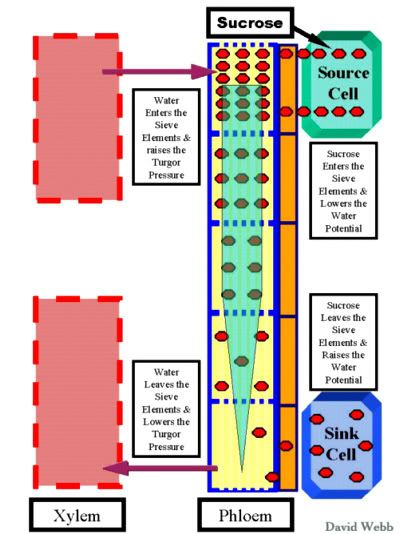PLANT TRANSPORT

Unlike water in the xylem, the fluid in the phloem flows throughout the plant, allowing minerals and compounds to diffuse out of the tube into various parts of the plant. Fluid in the phloem isn't pulled like water in the xylem but rather pushed by hydrostatic pressure (the pressure exerted by a fluid in all directions). 90% of the solute in the phloem is sucrose and the rest are hormones, nutrients and amino acids. The phloem is the food transport system of a plant. Nutrients originate in places called "sources" and are stored in areas of the plant called "sinks". ATP is used to actively transport nutrients into sinks and out of sources. Some scientists believe the sap in the phloem flows according to the Pressure Flow Hypothesis. The Pressure flow hypothesis states that sugars and nutrients actively transported into the phloem from sources creates a low water potential. Water from the xylem flows into these areas of low water potential. This raises the hydrostatic pressure in the phloem, pushing the sap around the plant. At sinks, nutrients are actively transported out of the phloem for storage, creating an area of high water potential. The water then flows back to the xylem where the water potential is lower. While the sun provides all the energy for the movement of water in the xylem, the plant provides the energy (expenditure of ATP) for movement of sap in the phloem.
